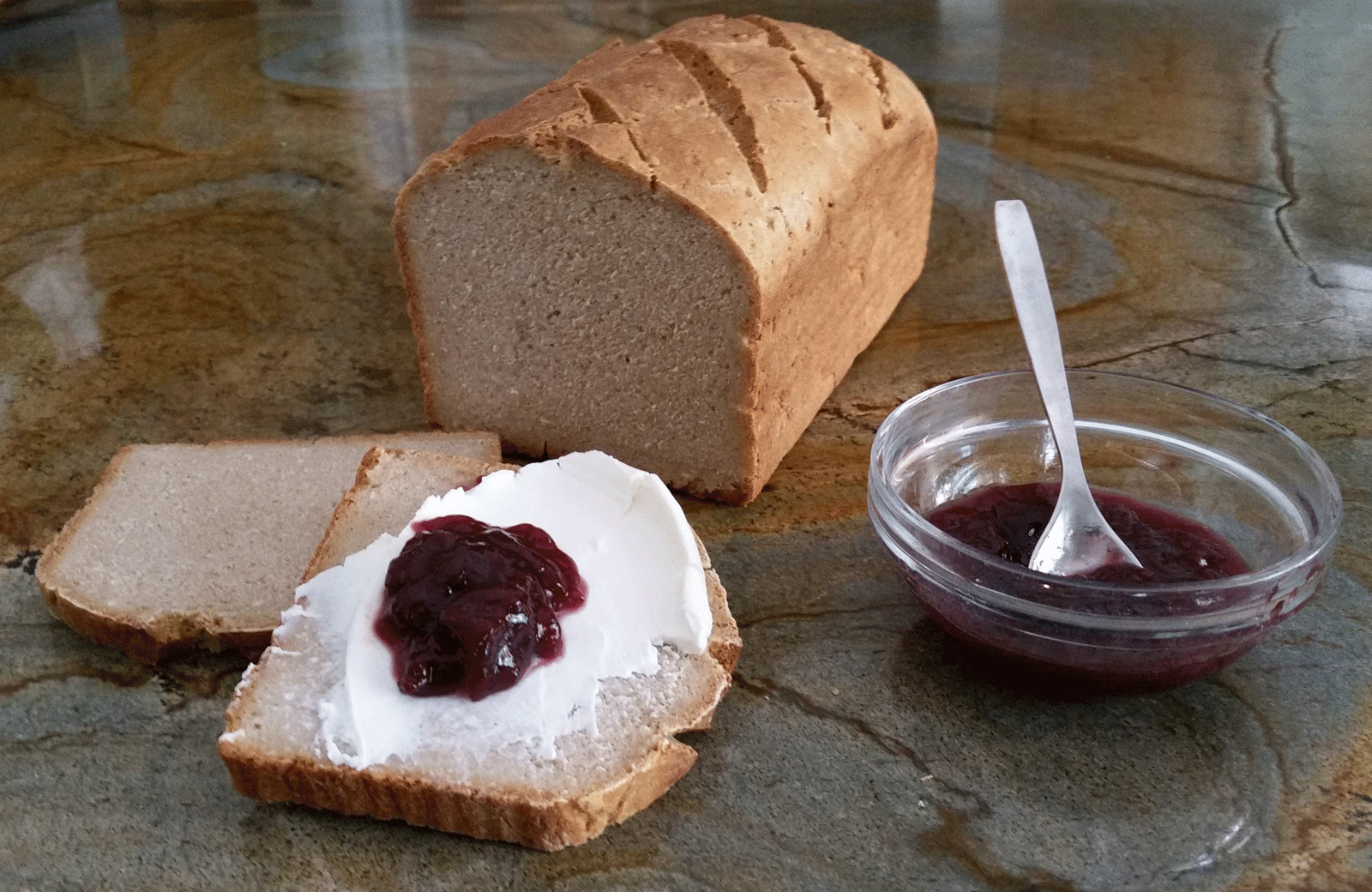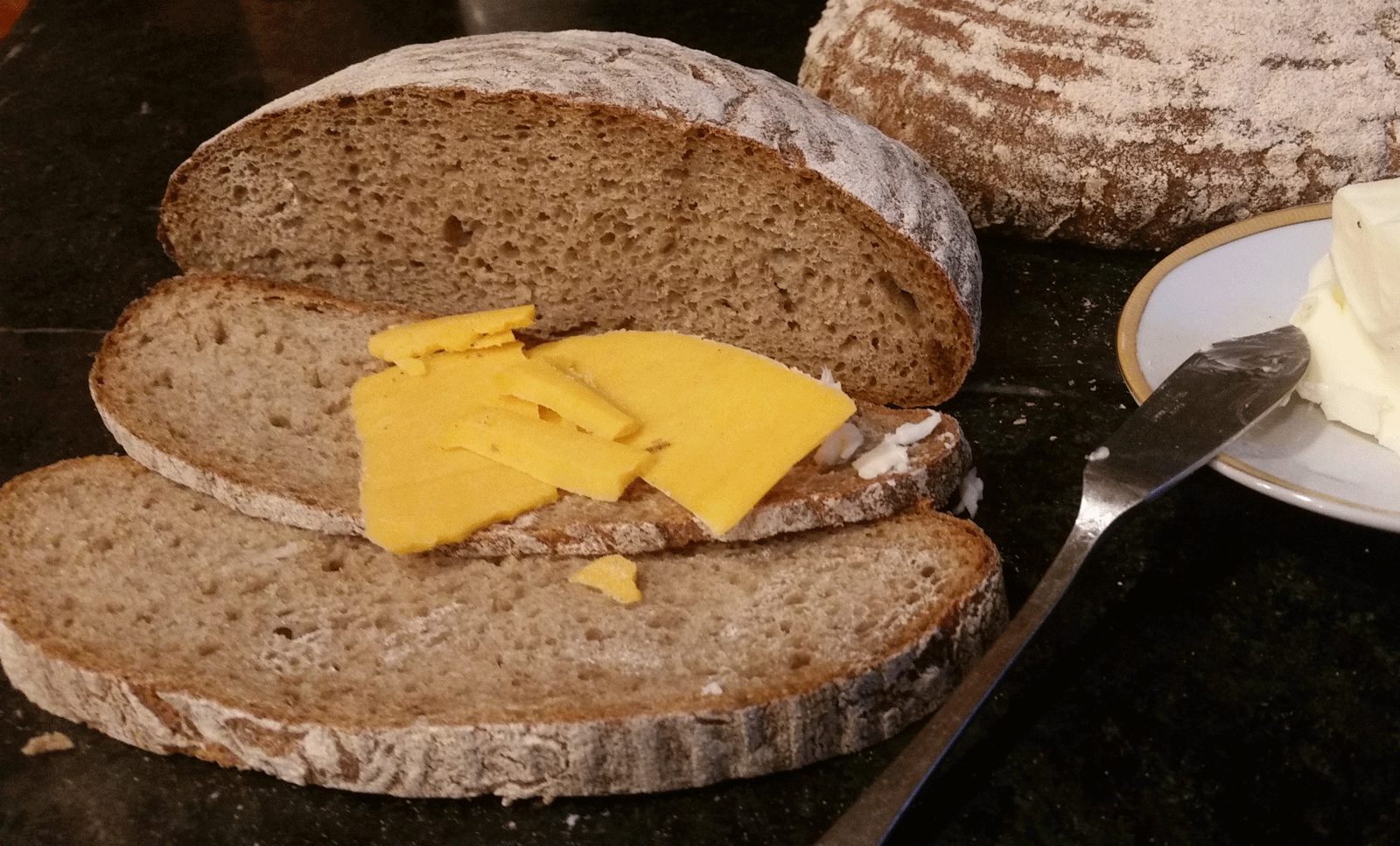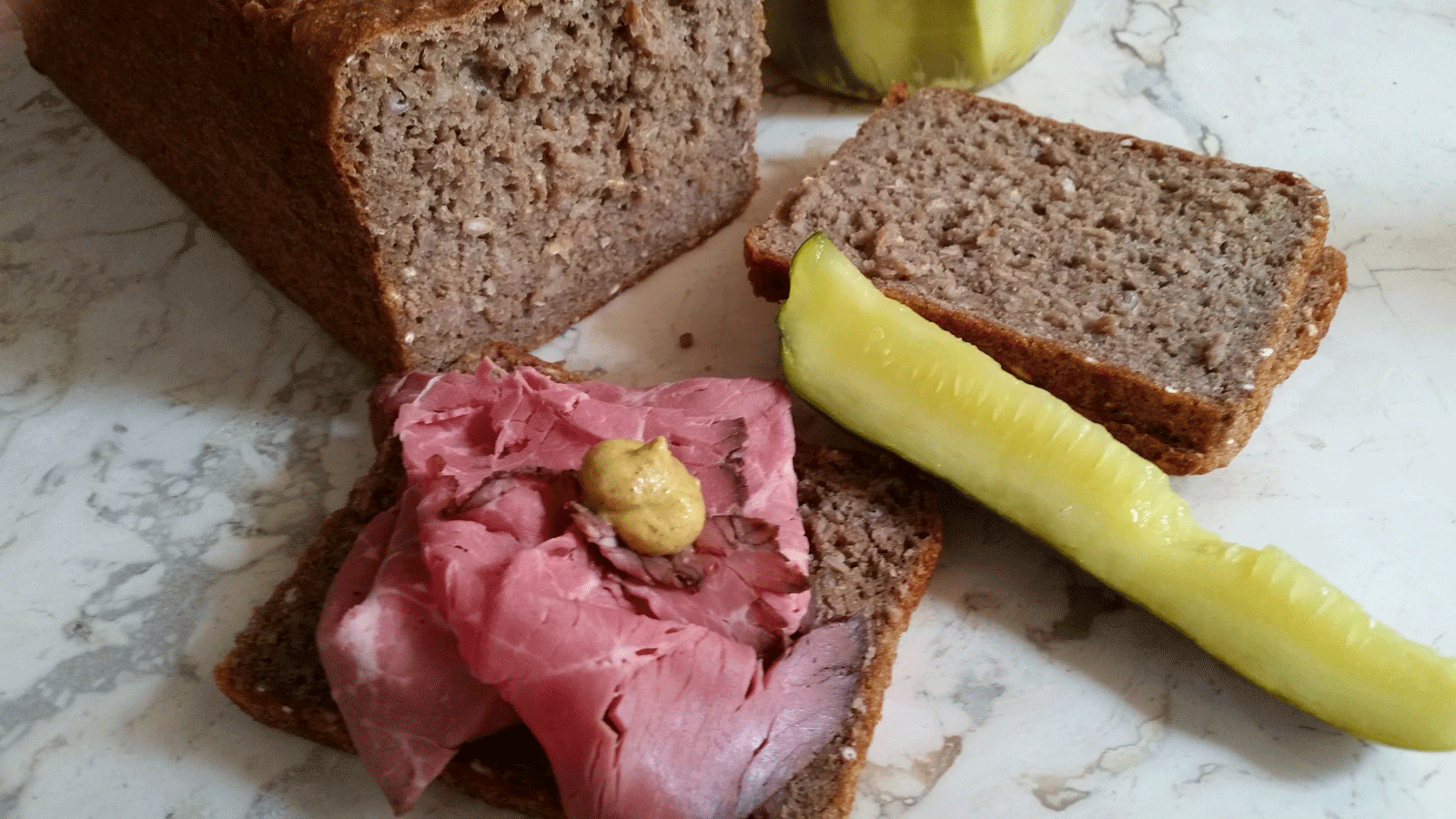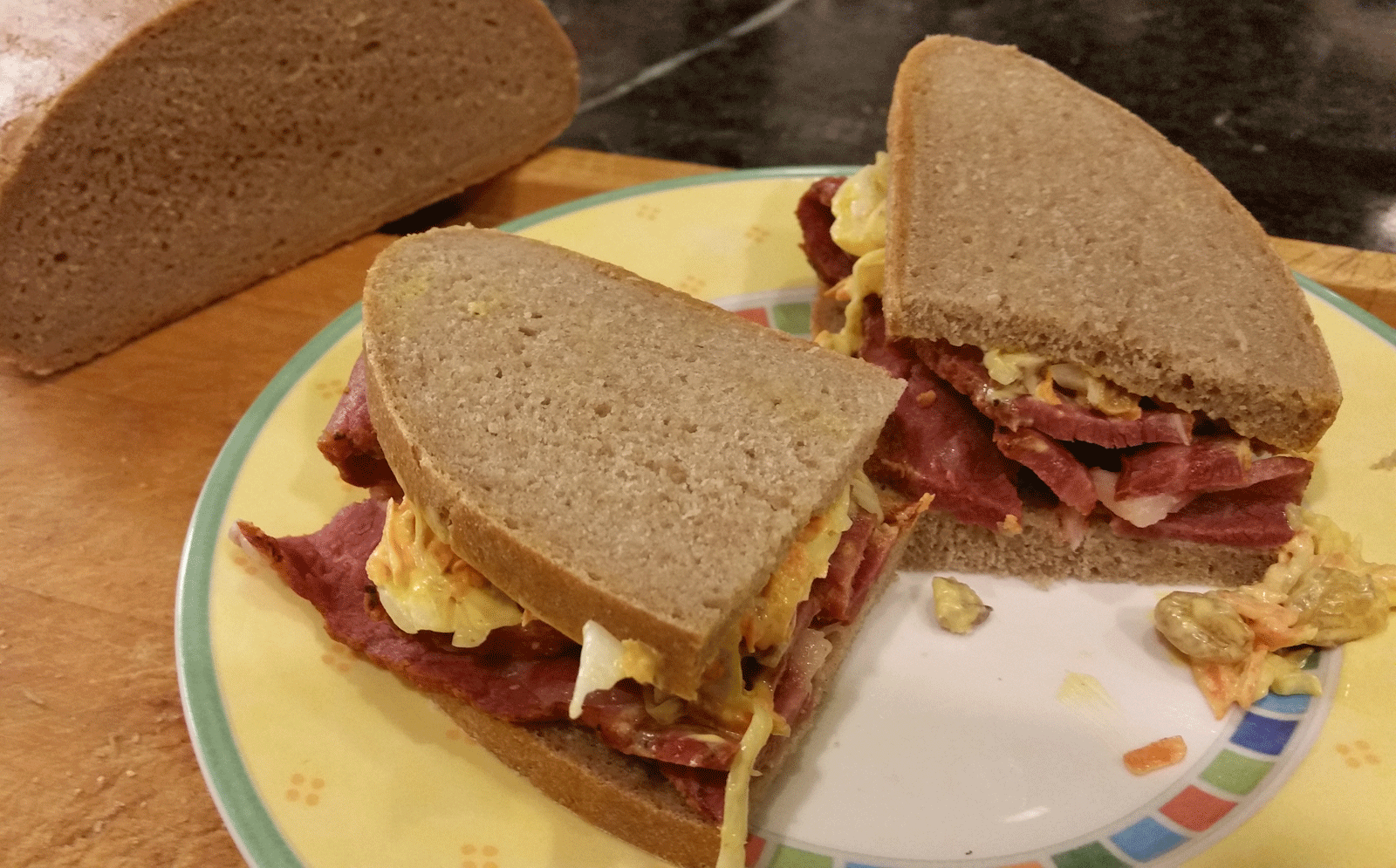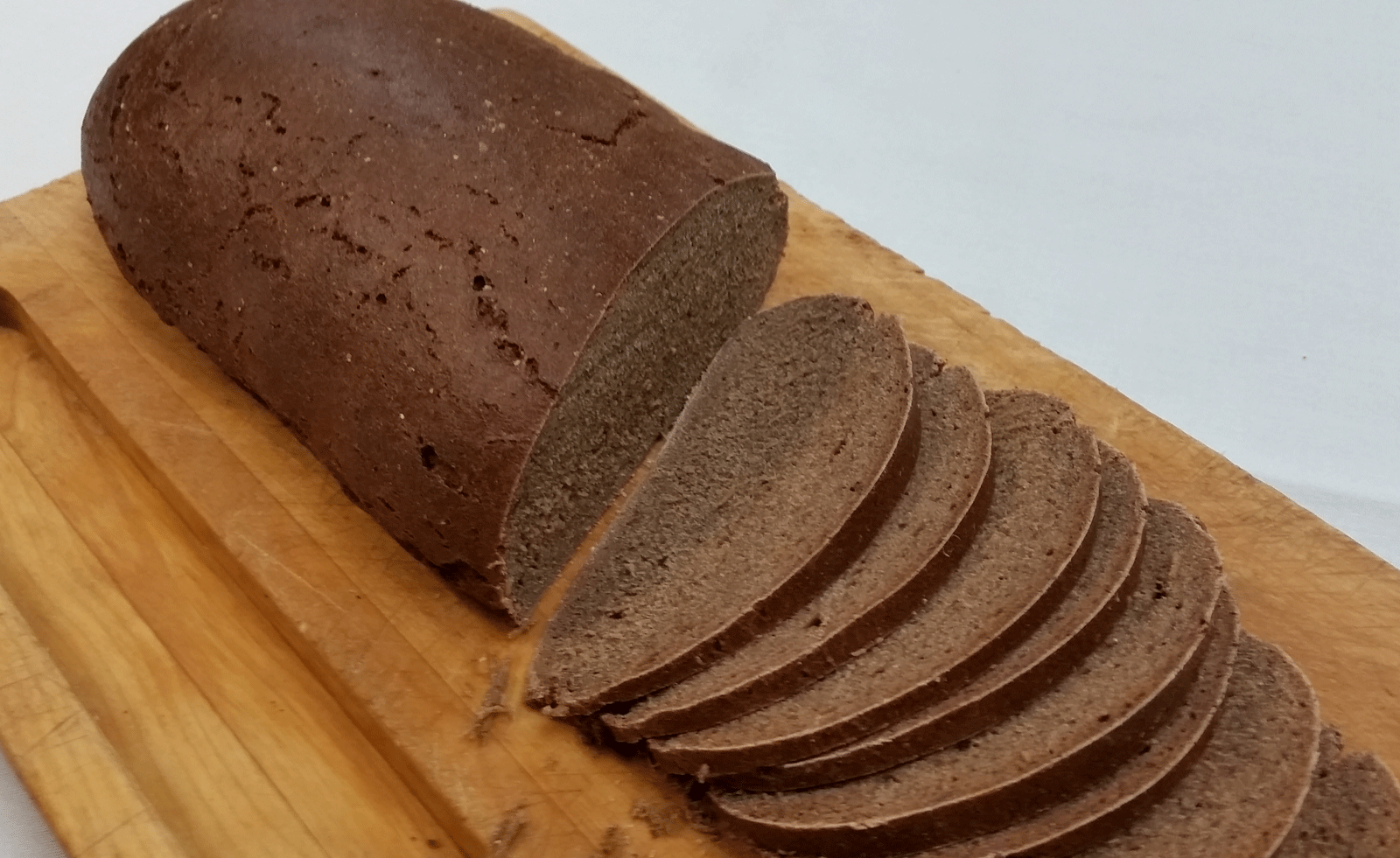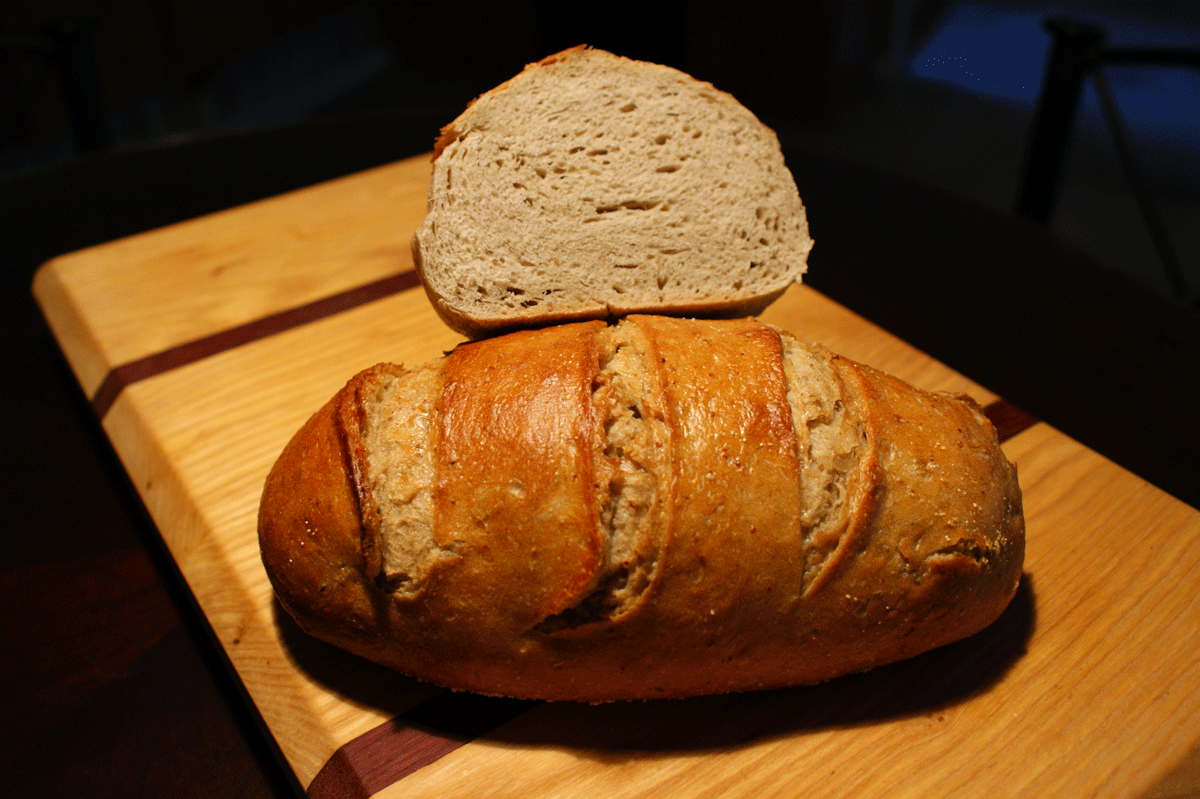| Rye %: | 75% |
| Stages: | Buckwheat gruel, Final dough |
| Leaven: | Yeast |
| Start to Finish: | 3 hours |
| Hands-on Time: | 25-30 minutes |
| Yield: | One 2½ lb./1.15 kg loaf |
“Fine,” is one of those words that has a multitude of meanings. It can mean “good,” as in “How are you?” “I’m fine.” It can mean sophisticated or refined, as in “fine dining” or “fine jewelry;” or it can describe a smooth, silky texture that’s the opposite of “coarse.” In the case of Holstein Fine Rye, it’s all of the above.

